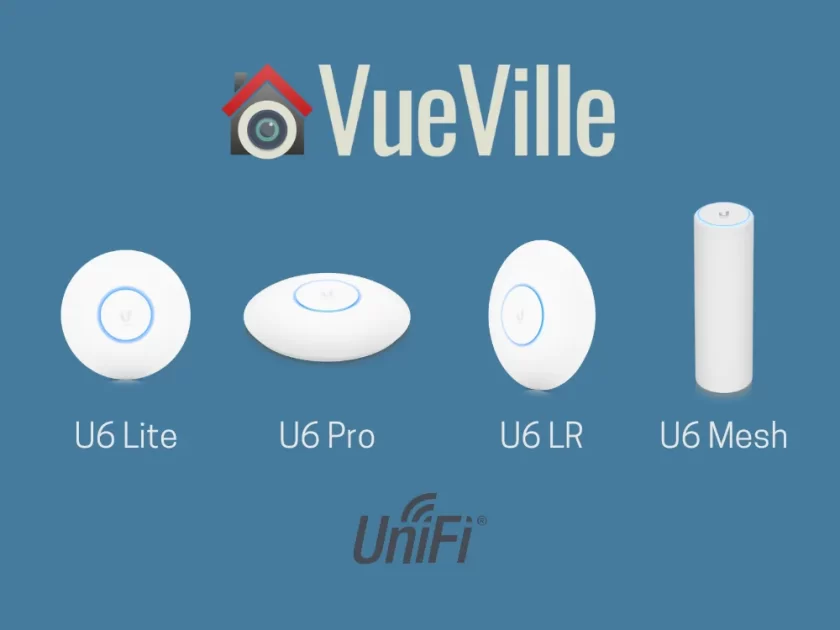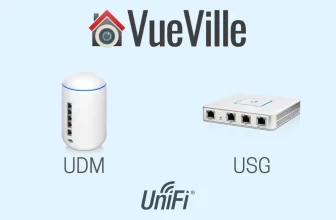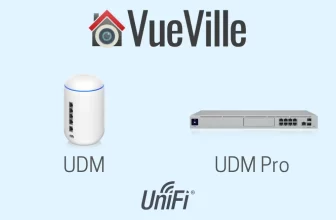Growing up in the early 2000s, I remember the Wi-Fi in our home being slow, unreliable but most of all extremely spotty. There were some areas of the house that were just dead zones. But after 2 decades, technology has advanced to the point where you can get speedy Wi-Fi that can stream multiple 4K streams simultaneously along with all the other traffic in a typical digital household
Now how reliable that Wi-Fi is across the whole home and whether there are dead spots is another matter altogether. If your home is large or spread across multiple floors, a single Wi-Fi router is just not going to cut it. But your ISP-provided router comes with just 1 Wi-Fi radio.
The answer to this conundrum is a Mesh Wi-Fi network. Ubiquiti have been offering their UniFi line of Wi-Fi access points long before the term mesh wifi became fashionable. All UniFi access points (AP) are mesh devices, because mesh simply means that it supports wireless up-link. Each UniFi AP can wirelessly link to each other, they just need power. Its still recommended to wire each AP to your router wherever possible, because wireless up-link is basically using a wireless back-haul channel which reduces the available data throughput of the AP.
While the likes of TP-Link, Google and Netgear have decent mesh Wi-Fi offerings these days, UniFi WAPs are at a whole different level when used as a part of a UniFi OS/console managed home network. And that’s exactly what we have in the VueVille DIY Smart Home network.
The UniFi line is great but can be a bit confusing for beginners to understand. So I have put together this comparison of their latest Wi-Fi6 compatible access points – the U6 Lite vs. U6 Pro vs. U6 LR (LR = Long Range).

A quick note: As an Amazon Associate I earn from qualifying purchases. This post contains affiliate link(s). An affiliate link means I may earn advertising or referral fees if you make a purchase through my link, at no extra cost to you.
Who is Ubiquiti and what is UniFi
Ubiquiti is a publicly listed American company based in California and was founded in 2003. Ubiquiti had revenues of over $490 million in the last quarter of 2022. Ubiquiti has several different brands such as UniFi, AmpliFi, EdgeMax, UISP, airMAX, airFiber, GigaBeam, and UFiber, aimed at different audiences.
The UniFi brand is the one that interests enthusiasts like me. It is considered a prosumer product line in that it supports features that are found more commonly at the enterprise-level but at a more affordable price.
A prime example of these enterprise-level features is the ability to use a single software interface called the UniFi Controller to manage every single device in your home network – managed switches, unmanaged switches, PoE switches, Wi-Fi access points etc. But let me make it more real for you – imagine you have 3 Wi-Fi access points across 3 levels of your town home and you want to add a new Wi-Fi network (SSID) for your IoT devices. With UniFi, you login to the controller interface and create the SSID. Click save and all 3 WAPs get provisioned immediately and your new SSID is live.
Some other enterprise-level features that the UniFi WAPs provide are multiple SSIDs, VLANs, guest networks, and very high number of concurrent users (300+).
Differences between U6 Lite vs Pro vs LR vs Mesh
The UniFi Access Point (UAP) U6 family consists of 5 models: the U6 Lite, the U6 Pro, U6 Long-Range (LR for short), U6 Enterprise, and the U6 Mesh.
Hold on, what is the U6 Mesh? Are the other U6 models not mesh devices? Of course all UniFi WAPs are mesh devices, as I explained earlier. I think UniFi chose a terrible name for the U6 Mesh and I can only imagine this for marketing purposes. This model is obviously aimed at the Google/Netgear/TP-Link plug-and-play mesh Wi-Fi market who are not very tech-savvy but represent a growing market. Those products typically only support wireless up-link because they do not have Ethernet ports. But the U6 Mesh has an Ethernet port, so it is just as wire-able as the other U6 models. The U6 Mesh should really have been called the U6 Pro Outdoor or something, because it is technically very similar to the U6 Pro, but with an IPX5 waterproof rating.
For our comparison, I have excluded the U6 Enterprise because home users don’t really need the advanced features such as 2.5 GbE, 6 GHz support, 600 simultaneous user support, or the much higher price point. But if you are still interested in it, I will have a U6 Professional vs. U6 Enterprise comparison soon.
Feature Comparison
The biggest differences between the UAP U6 Lite vs Pro vs LR vs Mesh are:
- The U6 Mesh can be used outdoors but the others cannot.
- The U6 Mesh can be placed on a table, wall-mounted or ceiling-mounted, but the others are designed to be wall or ceiling mounted only. You can of course place the others on a table but coverage may suffer.
- The U6 Mesh has a horizontal antenna pattern to maximise coverage on the same level/floor, the others have a forward beam-pattern that is better suited to ceiling-mounting.
- The U6 Lite is only dual-band (2.4 GHz and 80 Mhz channel-width), but the others also support the 160 MHz channel-width.
- The U6 Lite supports only WiFi4 (802.11ac) on the 2.4 GHz band, but the others support WiFi6 (802.11ax) on the 2.4 GHz band.
- The U6 Pro and U6 LR have more powerful processors and more RAM than the others.
- The U6 LR is the only one that has 4×4 MIMO in the 2.4GHz band.
- The U6 Lite is the only one that does not have 4×4 MIMO in the 5 GHz band.
- The U6 Lite has a 1.3 Gbps aggregate throughput, the U6 LR has 3.0 Gbps, the U6 Pro and U6 Mesh both have 5.3 Gbps.
Performance Comparison
I have been using the UniFi U6 Lite in my home for many months now and have been impressed by how much it improved Wi-Fi in my home. Range is very good and so are transfer speeds. But how does it compare to the other U6 models?
I studied all the major reviews of the U6 model range and combines with my personal experience, have come to the following conclusions:
- The U6 Lite and U6 Mesh have comparable 2.4 GHz performance at various distances, but at 5 GHz the U6 Mesh is faster.
- The U6 LR unsurprisingly has the best performance (speed and range) across both 2.4 GHz and 5 GHz bands, thanks to the highest signal strength and 4×4 MIMO on all bands.
- Instead of a single U6 LR, you may be better off having two U6 Lite APs to ensure a stronger, consistently fast signal for almost the same cost.
Frequently Asked Questions (FAQ)
Is Mesh faster than Wi-Fi?
Mesh networking simply means that the Wireless Access Points (WAP) can talk to each other instead of a central base station. This allows you to extend your Wi-Fi range considerably because each WAP can simply connect to the nearest WAP. This is called wireless up-link and is the term that UniFi also uses. So mesh networking does not make your Wi-FI faster, it is just a different way of connecting wireless access points together.
Does the UniFi-6 support Mesh?
Yes, all the UniFi 6 Access Points support mesh networking.
Can I use the U6 Pro or U6 LR outdoors?
While these are not rated water-proof, they are IP54 rated. The 5 means that they are dust-resistant, and the 4 means that they can withstand splashes of water. So exposure to some moisture should be OK, but you should really consider the U6 Mesh which is IPX5 rated for withstanding even jets of water.
Full Comparison Table
| U6 Lite | U6 Pro | U6 Long Range (LR) | U6 Mesh | |
|---|---|---|---|---|
| Bands | Dual-band | Tri-band | ||
| Class | AX1500 | AX5400 | AX3000 | AX5400 |
| Application | Indoor | Indoor/Outdoor | ||
| Weatherproofing | None | IP54 | IPX5 | |
| Software | ||||
| Operation mode | Standalone with mobile app, or can be managed by Unifi console | |||
| WiFi Standards | 802.11a/b/g/n/ac/ax | |||
| Wi-Fi technology (5 GHz band) | WiFi 6 (802.11ax) | |||
| Wi-Fi Technology (2.4 GHz band) | WiFi 4 (802.11n) | WiFi 6 (802.11ax) | ||
| Wireless security | WPA-PSK, WPA-Enterprise (WPA/WPA2/WPA3) | |||
| Maximum SSIDs supported | 8 per radio | |||
| VLAN | Yes, 802.1Q | |||
| Guest traffic isolation | Yes | |||
| Concurrent clients | ~300 | |||
| Certifications | CE, FCC, IC | CE, FCC, IC, MIC | CE, FCC, IC | |
| QoS | Per-user limiting | |||
| Hardware | ||||
| Processor | 880 MHz MIPS 1004 KEc | Dual-core 1GHz Qualcomm IPQ5018 | Dual-core 1.35GHz Mediatek ARM MT7622AV | 880 MHz MIPS 1004 KEc |
| Memory (RAM) | 256 MB | 1 GB | 512 MB | 2 GB |
| Management interface | Ethernet, Bluetooth | |||
| Networking interface | 1x GbE RJ45 port | |||
| MIMO | 2.4 GHz: 2 x 2 5 GHz: 2 x 2 | 2.4 GHz: 2 x 2 (UL MU-MIMO) 5 GHz: 4 x 4 (DL/UL MU-MIMO) | 2.4 GHz: 4 x 4 5 GHz: 4 x 4 | 2.4 GHz: 2 x 2 (UL MU-MIMO) 5 GHz: 4 x 4 (DL/UL MU-MIMO) |
| Max. TX power | 2.4 GHz: 23 dBm 5 GHz: 23 dBm | 2.4 GHz: 22 dBm 5 GHz: 26 dBm | 2.4 GHz: 26 dBm 5 GHz: 26 dBm | 2.4 GHz: 22 dBm 5 GHz: 26 dBm |
| Power method | PoE, passive PoE (48V) | PoE | PoE+, passive PoE (48V) | PoE |
| Power supply | UniFi PoE switch 48V, 0.32A PoE adapter (optional) | UniFi PoE switch 48V, 0.5A PoE adapter (optional) | UniFi PoE switch 48V, 0.32A PoE adapter (included) | |
| Max Power Consumption | 12W | 13W | 18.5W | 11.4W |
| Mounting | Wall/ceiling (included) | Wall, desktop, pole mount (included), Ceiling mount (optional) | ||
| LEDs | White/blue status | |||
| Dimensions | Ø160 x 32.65 mm (Ø6.3 x 1.3") | Ø197 x 35 mm (Ø7.76 x 1.38") | Ø220 x 48 mm (Ø8.66 x 1.89") | Ø48.5 x 159.5 mm (Ø1.91 x 6.28") |
| Performance | ||||
| Throughput rate | 2.4 GHz: 300 Mbps 5 GHz: 1.201 Gbps | 2.4 GHz: 573.5 Mbps 5 GHz: 4.8 Gbps | 2.4 GHz: 600 Mbps 5 GHz: 2.4 Gbps | 2.4 GHz: 573.5 Mbps 5 GHz: 4.8 Gbps |
| Aggregated throughput rate | 1.5 Gbps | 5.3 Gbps | 3.0 Gbps | 5.3 Gbps |
| External Device Support | ||||
| Power Supply Redundancy and Failover | No | |||
| LTE Failover Redundancy | No | |||
| Product Support | ||||
| Warranty | 2 years when purchased from UBIQUITI’S Webstores 1 year when purchased from an authorized UBIQUITI distributor or reseller | |||
Where to Buy
(* = affiliate link / image source: Amazon Associates Program)
Conclusion
- The U6 Pro is the recommended model for most people if you want the fastest possible WiFi6 experience (in most scenarios) on both the 2.4 GHz and 5 GHz bands.
- If you are on a budget, the U6 Lite will be more than enough for most people.
- If you are looking for an outdoor option that is waterproof, go for the U6 Mesh.










Hi there,
I am looking at the U6 pro, i want two of these but was hoping to mount them on the wall of my front and rear balcony for aesthetic reasons. (Please note the roof extends 3-4 meters on both of them so the chance of them getting wet is near impossible plus it goes up to cathedral ceilings). From the point of these i would like a 15-20 m radius externally not obstructed of course. Do you think this is possible mounted vertically (wall mounted).
Thanks Sam
Hey Sam, you should be fine as these radios are kind of omnidirectional in nature. Yes when mounted horizontally as it is intended to be, the signal will emanate more to the sides than up/down. So when you mount it vertically on a wall, theoretically it is less ideal. That said, I have a U6 Lite mounted on a wall at home and it works well. Nothing to complain about.
If you want to (really) get into the details, you can study the radiation patterns of the U6 Pro at this Unifi link.